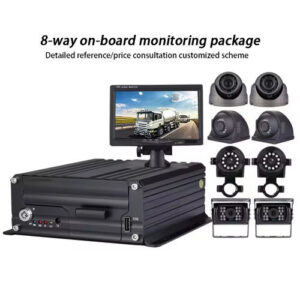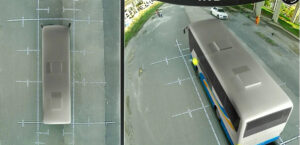4G live dashcams have transformed vehicle safety and monitoring by providing real-time video streaming, GPS tracking, and advanced analytics. Individual drivers, commercial fleets, and ride-sharing services widely use these dashcams to enhance safety, improve accountability, and optimize operations. This article delves into the features, benefits, applications, and future trends of 4G live dashcams, showcasing their role in modern transportation.
What is a 4G Live Dashcam?
A 4G live dashcam is a dashboard-mounted camera system that uses 4G cellular networks to transmit real-time video feeds, location data, and alerts to connected devices. Unlike traditional dashcams that store footage locally, 4G dashcams enable remote access to live and recorded videos, making them invaluable for safety, evidence collection, and fleet management.
Key Features of 4G Live Dashcams
4G live dashcams come with an array of features designed to provide comprehensive monitoring and safety:
- Real-Time Video Streaming: Transmits live video feeds to mobile apps or web dashboards for remote monitoring.
- Dual-Facing Cameras: Captures both the road ahead and the driver’s cabin for complete oversight.
- GPS Tracking: Monitors vehicle location, speed, and routes, enabling precise navigation and accountability.
- Event-Based Recording: Automatically records incidents like collisions, harsh braking, or sudden acceleration.
- Cloud Storage: Securely stores video footage in the cloud for easy retrieval and analysis.
- AI-Powered Analytics: Detects risky behaviors like distraction, drowsiness, or mobile phone usage in real-time.
- Two-Way Communication: Allows direct interaction between drivers and fleet managers or emergency contacts.
- Night Vision: Infrared LEDs ensure clear recording in low-light or nighttime conditions.
- Wide-Angle Lenses: Provides broader coverage to capture more details of the road and surroundings.
How 4G Live Dashcams Work
These dashcams operate as part of an integrated system combining hardware and software to deliver real-time monitoring and analytics:
- Video Capture: High-definition cameras record video of the road, driver, and vehicle interior.
- 4G Transmission: Footage is transmitted via cellular networks to a secure cloud platform or connected devices.
- Real-Time Monitoring: Fleet managers or individual users can access live feeds and data through apps or dashboards.
- Event Detection: Sensors detect sudden movements or impacts, triggering automatic recording and notifications.
- Data Analysis: AI algorithms analyze footage for unsafe behaviors, generating actionable insights and reports.
Benefits of 4G Live Dashcams
1. Enhanced Driver Safety
Dashcams monitor driving behaviors and provide real-time alerts to prevent accidents, ensuring safer journeys for all.
2. Real-Time Monitoring
The ability to access live video feeds allows fleet managers to respond quickly to emergencies or incidents on the road.
3. Evidence Collection
Recorded footage serves as reliable evidence for resolving insurance claims, legal disputes, or traffic violations.
4. Improved Fleet Management
GPS tracking and analytics help fleet operators monitor vehicle performance, optimize routes, and enhance operational efficiency.
5. Reduced Insurance Costs
Many insurance providers offer discounts for vehicles equipped with advanced dashcams, recognizing their role in accident prevention.
6. Enhanced Accountability
Real-time monitoring ensures drivers adhere to company policies and traffic laws, promoting a culture of accountability.
7. Nighttime Security
Infrared night vision capabilities ensure effective monitoring during nighttime or in low-light environments.
Applications of 4G Live Dashcams
These dashcams are utilized in various scenarios to enhance safety, efficiency, and accountability:
1. Personal Vehicles
Individual drivers use 4G live dashcams for accident documentation, enhanced safety, and real-time monitoring.
2. Commercial Fleets
Fleet operators install dashcams to monitor driver behavior, optimize routes, and ensure timely deliveries.
3. Ride-Sharing Services
Companies like Uber and Lyft use dashcams to enhance driver and passenger safety and resolve disputes effectively.
4. Public Transport
Buses and taxis use 4G dashcams to monitor road conditions, and passenger behavior, and ensure compliance with regulations.
5. Emergency Services
Dashcams in ambulances, fire trucks, and police vehicles provide critical evidence for investigations and operational reviews.
6. Heavy Equipment and Construction
Dashcams installed in construction vehicles enhance safety and ensure compliance with safety protocols.
Future Trends in 4G Live Dashcams
Technological advancements are driving the evolution of 4G live dashcams, introducing new features and capabilities:
1. AI-Powered Predictive Analytics
Future dashcams will use AI to predict potential accidents and provide proactive safety measures.
2. 5G Connectivity
As 5G networks become more widespread, dashcams will benefit from faster data transmission and enhanced real-time monitoring.
3. Ultra-High Definition
Cameras will offer 4K or higher resolutions, providing clearer and more detailed recordings.
4. Integration with Autonomous Vehicles
Dashcams will play a critical role in autonomous systems, providing real-time video feeds and data for decision-making.
5. Sustainability
Energy-efficient and solar-powered dashcams will support eco-friendly transportation practices.
Challenges and Solutions
While 4G live dashcams offer numerous benefits, they also face certain challenges:
1. Privacy Concerns
Addressing privacy concerns requires compliance with data protection laws and the use of encrypted storage solutions.
2. High Initial Costs
Advanced dashcams can be expensive, but their long-term benefits in safety and efficiency often justify the investment.
3. Maintenance Requirements
Regular maintenance is essential to ensure optimal performance, especially in harsh environmental conditions.
Conclusion
4G live dashcams are revolutionizing vehicle safety and monitoring by offering real-time video streaming, advanced analytics, and seamless connectivity. From individual drivers to large fleets, these systems enhance safety, improve accountability, and optimize operations. As technology continues to advance, 4G live dashcams will become even more sophisticated, featuring AI-driven analytics, 5G connectivity, and sustainable designs. Explore the latest 4G live dashcams to unlock their full potential for your vehicle or fleet.






